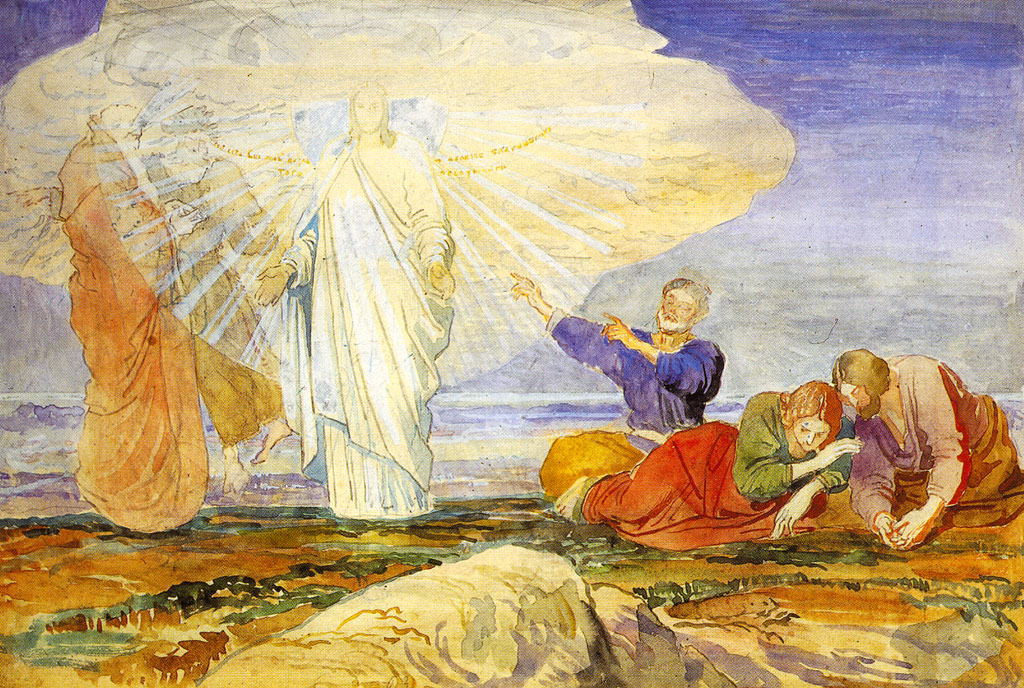Readings: Gen 15:5-12, 17-18; Ps 27:1,7-9, 13-14; Phil 3:17-4:1; Lk 9:28-36
Towards an experience of Jesus
Mountains are seen as locations of God-experience in many traditional cultures, and in many of the world religions. It is not by chance then that one of the classical works of St John of the Cross is called, The Ascent of Mount Carmel (1579); and more recently, Thomas Merton entitles his autobiography as, The Seven-Storey Mountain (1948).
The gospel readings of the first two Sundays of Lent follow a certain pattern in all the three year cycles. The first Sunday of Lent we always meditate on the temptations of Jesus, and on the 2nd Sunday, like today, on the transfiguration of the Lord. The focal point of the event of transfiguration is a mountain. The narration from Luke describing the transfiguration clearly has three parts:
1. Going up the mountain
2. The moment of grace on top of the mountain
3. Coming down the mountain with the fruits of that experience
Let us reflect on these three aspects of the gospel story and see what they could mean for us today, particularly in our preparation towards Easter.
1. Going up the mountain: the stage of preparation
The gospel reading of Ash Wednesday, proposed a programme for the spiritual journey of the season of Lent: fasting, prayer and almsgiving. These three ‘strategies’ are relevant not only for the season of Lent, but throughout our Christian life. The season of Lent is but an intense way of living out our Christian life. Therefore fasting, prayer and almsgiving are ways to go beyond ourselves, extend our hearts to God (vertical dimension – in prayer), and to stretch out our hands to our neighbours (the horizontal dimension – in charity). These two dimensions of our Christian life journey are like going up the mountain and coming down it.
What does the gospel text of today tell us about going up the mountain, more precisely, about Christian prayer? At least three things become clear to me: Firstly, it is Jesus who “took with him Peter, John and James and went up the mountain to pray.” It is God himself who enables us to seek him in prayer. Just as it was God who invited Abram to enter into a covenant with Him, as we heard in the first reading of today (Gen 15:5-12, 17-18), just like it was God who invited Moses to the mountain (Ex 24:12-18; 34:2), just as it was God who invited Elijah to the mountain-top (1Kings 19:11-13), it is God who invites us to enter into a relationship with Him in prayer. Secondly, in contrast to the Old Testament accounts of the encounter of God with individuals like Abram, Moses and Elijah, in the New Testament, Jesus takes three of his apostles with him. There is a community on top of the mountain. Even if God invites us personally to encounter him, it is often in the context of the community. And thirdly, it is up to us to respond to the invitation of God. Peter and John and James respond to the invitation of Jesus to go up the mountain.
2. On the mountain-top: an experience of the uniqueness of Jesus
On top of the mountain the three disciples are privileged to witness a theophany despite their own inability to be present to God. Luke tells us, “Peter and his companions were heavy with sleep…” (Lk 9:32). They see Jesus in the company of two great men in the history of Israel: Moses and Elijah. Moses stands for the Law and Elijah for the Prophets, thus showing that Jesus is the fulfilment of the Old Testament. The subject of the conversation between Jesus and the two great personages is “his passing which he was to accomplish in Jerusalem” (Lk 19:31). This ‘passing’, or as in some other translations, the ‘departure’ of Jesus could refer to his being taken up to heaven, because Moses and Elijah were taken up to heaven. It could also refer to the ‘Passover’ – which would be associated with the paschal mystery of the crucifixion and death of Jesus.
The reaction of Peter to this theophany is “confusion” and an inability to comprehend the depth of the event. “Master, it is wonderful for us to be here; so let us make three shelters, one for you, one for Moses and one for Elijah” (Lk 19:33), Peter suggests. He equates Jesus to Moses and Elijah. What follows then is a clearer demonstration of who Jesus really is: “a cloud came and covered them with shadow” (v.34); from the tradition of the book of Exodus, ‘cloud’ is a powerful symbol of the presence of God. As if this was not enough, “And a voice came from the cloud saying, ‘This is my Son, the Chosen One. Listen to him” (v.35)! This was for the disciples an experience God in the person of Jesus.
Going up the mountain is our choice of will, in responding to the invitation of God. But what actually happens on the mountain-top is the Grace of God. It is not up to us control it. The experience of God may be transient. We are not able to hold on to it. We are not able to pitch our tents on the mountain-top. But its after-effect is what we carry forward to our daily encounters.
3. Coming down the mountain: contemplating and reaching out
How does this happen? Firstly, through silence and contemplation. Luke tells us in today’s gospel: “The disciples kept silence and, at that time, told no one what they had seen” (Lk 9:36b). God experience invites us to silence and contemplation, so that the effects of the experience could be deepened.
Secondly, this silence is not necessarily a permanent isolation from the world. It is also something that is carried forward to the market place, to our daily life, to our homes, to the place of work and study. The Lukan narrative continues (Lk 9:37): “Now it happened that on the following day when they were coming down from the mountain a large crowd came to meet him.”
The spiritual exercises of the Lenten season are meant to offer us, my dear friends, the possibility of experiencing God more deeply, and to carry that experience to our encounter with people. Let us pray that we may be open to this possibility in the coming days.
Fr. Franco Pereira, S.D.B.


